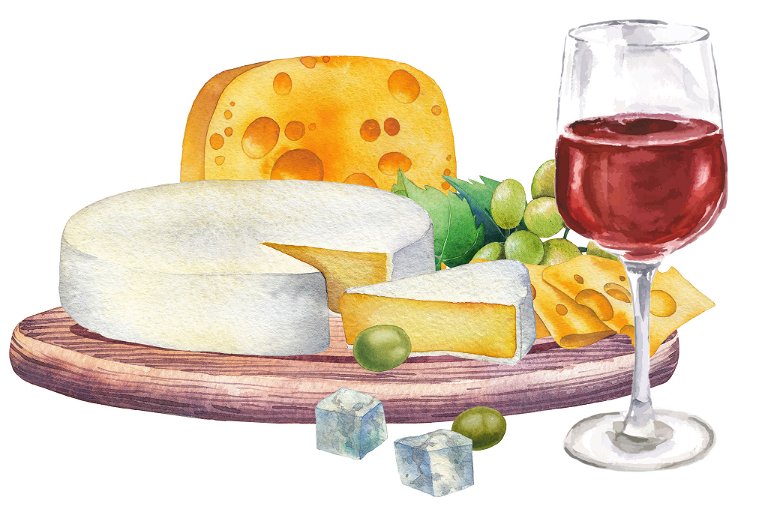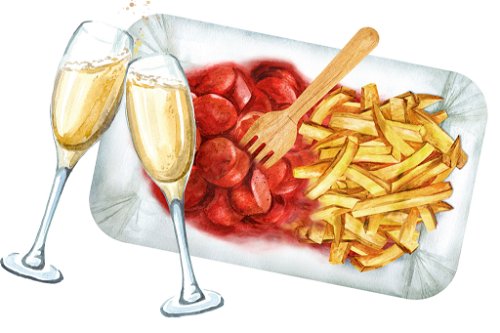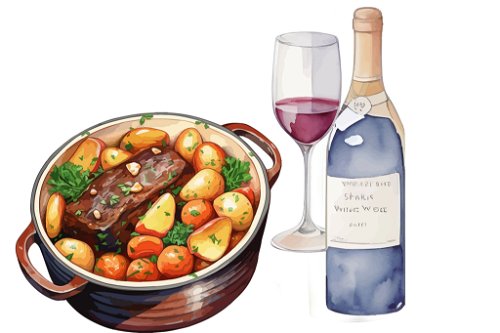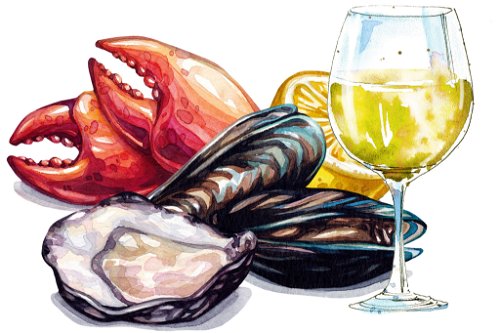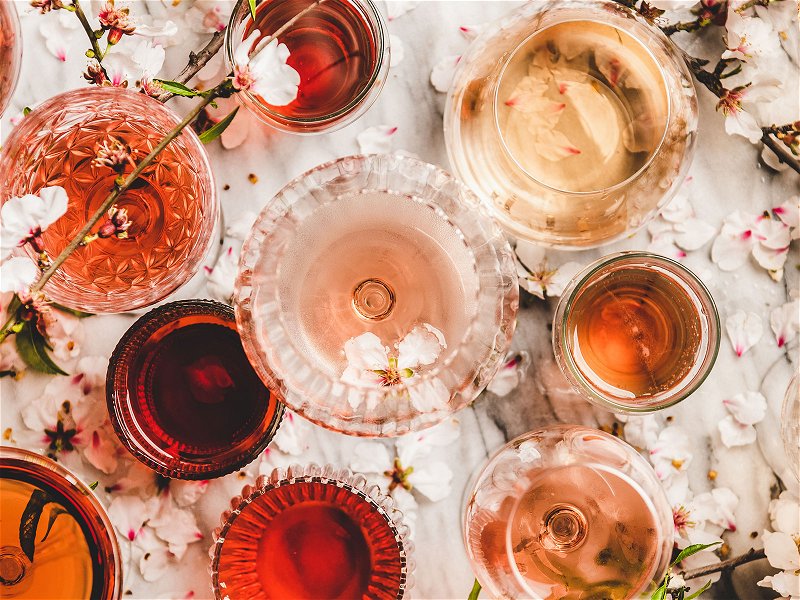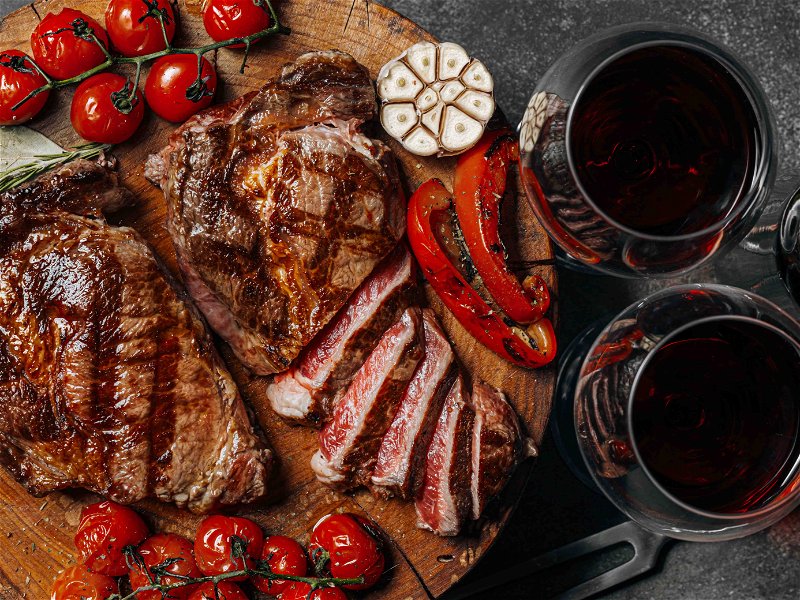Pairing time: The Falstaff guide to perfect food pairing
A festive meal with family and friends calls for a tasteful wine accompaniment. There are many pitfalls. There are many myths surrounding perfect food and wine pairing - and not all of them are justified. A guide through the almost unmanageable canon of rules and prohibitions.
A well-known German sommelier likes to tell the following anecdote from the beginning of his career in convivial company: when he was a young, ambitious sommelier, he told a regular guest who wanted a Riesling with his beef steak, "But that doesn't suit you!" To which the regular replied: "It doesn't suit you - but it suits me!"
With this bon mot, the quick-witted, and experienced, drinker anticipates the first and most important conclusion to be drawn in a story about the marriage of food and wine: it "goes" a lot more than the taste-based prejudice would have you believe. It's good to know when cooking up a storm around the festive season; the wine accompaniment for the whole family needs to be chosen wisely.
Of course, the canon of commandments (and above all prohibitions) did not develop by chance. Anyone who wants to break the bans must be aware of the factual reasons that lead to them. Only then can breaking the rules become a highly enjoyable experience.
Red wine and fish have a particularly difficult relationship. The following combination is an ideal example of how justified the rule of not combining these two is: if you drink a very tannin-rich red wine, such as a Madiran from southwest France, with steamed cod, small, stringy lumps will form in the mouth and stick to the mucous membrane. What happens at this moment is a precipitation of the wine's tannins by the protein in the fish. Winemakers have been using this effect to their advantage for centuries in the ageing of red wines when they want to reduce the tannin content of the wine and clarify it.
Whipped chicken egg white is introduced into the barrique, where it binds lees and tannins, due to the immense "inner surface" of the protein molecules which then sink to the bottom as something solid. The wine is then drawn off over this unappetising mass into another barrel. Cooks are familiar with the same effect from the purification process when preparing a consommé. But do you want to have the flocculated sediment in your mouth?
If you still want to drink red wine with fish, it is advisable to make two adjustments: firstly, you should choose a red wine that has very little tannin. Secondly, it is advisable not to choose fish that is completely lean - and to prepare it in a way that "hides" the protein as much as possible. This is why, if it is to be a red wine, the fish is often grilled: the singed, solidified surface of the fish - whether it consists of the skin or the flesh - acts as a protective shield against too much contact with the wine's tannin.
The worst wine killers
You also need to be aware of the problem if you want to drink wine with spinach, artichokes, tomatoes or salads. Spinach contains oxalic acid - a substance that does not taste intensely sour, but is responsible for the dull feeling that remains on the teeth after eating steamed or blanched spinach. In combination with wine, a metallic sensation can arise in the mouth. Here too, it is important to avoid an excess of tannins as far as possible. Taming the spinach with cream or crème fraîche also makes sense. It also makes sense to pour away the water that the spinach has released during steaming. It is particularly rich in oxalic acid.
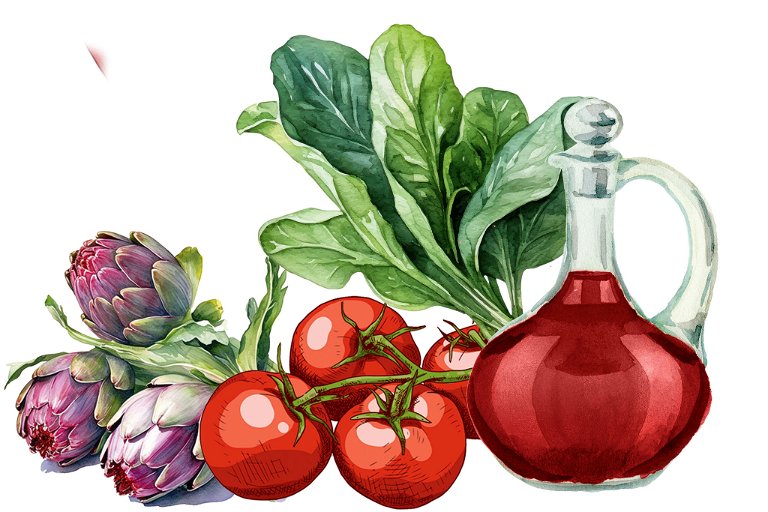
In the artichoke, an enzyme called cynarin is the spoilsport. This substance changes the taste buds in the mouth in an insidious way. First, it blocks the receptors that perceive sweetness and thus tends to emphasise other taste dimensions - saltiness, bitterness and acidity. If the cynarin is washed away the next moment by a liquid, such as a sip of wine, then the unblocked sweetness receptors send a sweetness signal, even though there is actually no sweetness present. Unpleasant. It gets even more complicated because artichokes also contain chlorogenic acid, which is perceived as astringent, bitter and sour. And then there is the artichoke heart. The fact that it is typically placed in lemon water before further processing to protect it from oxidation gives the vegetables an extra portion of acidity.
The main problem with the artichoke is therefore the variety of its interactions with a wine; the combination is practically uncontrollable. What you need is a wine that forgives and is able to buffer a lot; that manages to integrate sweetness, acidity and bitterness with great flavour elasticity. It certainly helps if it also has a little fat. White wines from the Rhône Valley or Provence are a good bet, as is fino sherry.
With tomatoes, on the other hand, it is simply the acidity that clashes with the wine partner. With almost all tomato-based dishes, it makes little sense to look for a complex marinade - just as with all dishes served with a vinaigrette. It is enough to avoid an excessive duplication of acid sensations and concentrate on the aspects of freshness and drinkability: for example with a rather smooth dry rosé or - if the tomatoes are combined with minced meat - with a light, fruity red wine.
Salads in which there is enough fat in the mayonnaise to limit the effect of the vinegar are less critical.
Important guard rails
Egg whites, spinach, artichokes, tomatoes and vinegar are the main motifs which, although not strictly forbidden, are a reminder to be careful. But what about the commandments? Naturally, there are many of these, and the most diverse of them can lead to equally great enjoyment.
The first basic rule, which is not always heeded, especially in gastronomy - is that wine and food should be of the same quality. It makes little sense to drink a vintage champagne with a currywurst. Conversely, the elaborate starter demands something better than a candy-scented eight-euro wine. So the same applies at home: if you cook with great ambition and with fine ingredients, then a prestigious - preferably matured - bottle belongs on the table. For good home cooking, the wine is in the mid-range price category. If it's home cooking, you're looking for a solid, upmarket basic quality.
Often you can also take advantage of the fact that there is a silent complicity between the winegrowers and the culinary tradition of a region.
Naturally, you drink a glass of Burgundy with your boeuf bourguignon, with all dishes including sauerkraut a Riesling, a Grüner Veltliner goes well with the boiled meat of Viennese cuisine, Fendant or Vaud Chasselas are served with cheese fondue, and all red wines from the Basque country, including Rioja, are a good choice with Basque-style chicken (with peppers). Nemea is the natural partner for moussaka, Sancerre is the ideal accompaniment to goat's cheese from the Loire Valley. The list could go on and on.
Furthermore, there seems to be an almost magical connection between some soils and certain foods. The Kimmeridge limestone, which lies beneath the best Chablis vineyards, is made up of tightly caked shells. The wines from this soil are the ideal accompaniment for oysters. The chalky soils of Champagne also have their origins in the sediments of a prehistoric sea. And which sea creature doesn't go particularly well with a glass of champagne?
Is there such a thing as a "jack of all trades" when it comes to wine accompaniment? This question has immediate practical significance if you don't want to get involved with wine by the glass in a restaurant and instead want to "drink through" a good bottled wine from the starter to the main course. And indeed, the endeavour is not hopeless. What you need is a rather full-bodied and slightly phenolic white wine that is restrained in its aroma and not overly influenced by wood. Silvaner wines are very versatile: they go well with shellfish, freshwater and saltwater fish, vegetarian dishes, white meat and poultry. They are at least acceptable with red meat and game.
Many rosés also represent a good compromise between red and white wine virtues, but you should definitely reach for the upper league. Some orange wines are also suitable as all-purpose companions - especially if they are not too extreme and provocative. Last but not least, a type of wine that is often forgotten works with almost everything: sherry. From ethereal Manzanilla to equally dry but stronger Fino and nutty, sparse Amontillado, there is everything here to accompany a variety of dishes from fish to beef steak.
Admittedly, spending an entire evening with sherry is not everyone's cup of tea. But you should keep it in mind as a trump card if you are ever unsure about your choice of wine. Incidentally, Amontillado is the dream combination for a dish that is also often portrayed as difficult to combine; it goes exceptionally well with all clear soups, from meat broth to game essence.
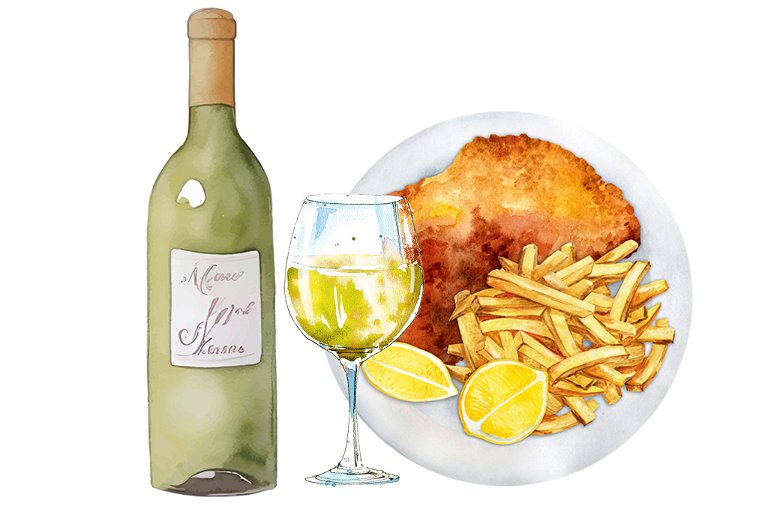
Carved in stone
In French cuisine in particular, some combinations are set in stone: chicken in morel cream is accompanied by vin jaune, and old Burgundy is a must with game birds. Turbot on beurre blanc is served with Champagne or white Burgundy - the same wines that are used in the sauce. This last circumstance is one of the reasons why the French canon has been so popular since the times of Marie-Antoine Carême and Auguste Escoffier - two of the most important Master chefs from the early 19th and 20th century - has remained so consistent.
Nothing builds a better bridge between wine and food than concentrated wine in a sauce. But you have to know how to play and abstract. The sommelier of a three-star restaurant, for example, once confided to the writer that he makes dozens of Burgundy sauces for his chef every year. Côtes du Rhône has a place when in search of a Grenache-based red which transports the silky, fine fruity finesse of a Burgundy into the sauce, without bringing that kick of acidity and tannin (unpleasant due to the concentration) that you would get if you were to cook a real Burgundy in the sauce.
Red wine with cheese, and of course with red meat; these are the most deeply rooted beliefs when it comes to food pairing. For some soft cheeses, the attribution is correct, but the much better rule of thumb is again that of geographical proximity: hard cheeses such as Gruyère or Comté develop their full potential with white wines from the Jura or the Alpine valleys of Switzerland. Munster and Alsace Gewürztraminer are made for each other. Red wines with cheese are a delicate combination: with mature hard cheeses such as Parmesan and Sbrinz, the tannin precipitation described for fish sometimes occurs when paired with tannin-rich reds. Époisses and the appropriately named Ami du Chambertin are often cited as typical sparring partners for red Burgundy, for example; as the fatty aspect of soft cheeses generally dominates over the protein, there is no danger from this side. On the other hand, the strong aromas of the rinds are not suitable for increasing the complexity of the wine. If you want to go for a red wine, you should definitely choose a mature vintage with mild tannins.
